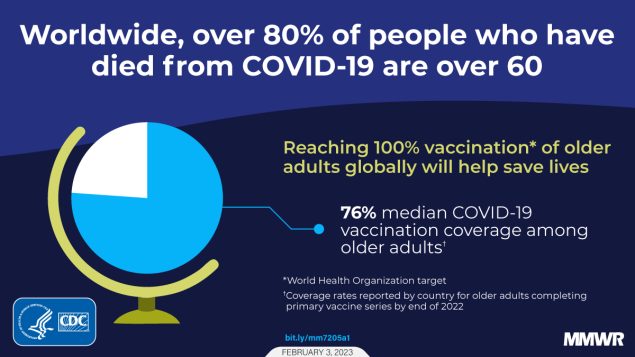
After the emergence of SARS-CoV-2 in late 2019, transmission expanded globally, and on January 30, 2020, COVID-19 was declared a public health emergency of international concern.* Analysis of the early Wuhan, China outbreak (1), subsequently confirmed by multiple other studies (2,3), found that 80% of deaths occurred among persons aged ≥60 years. In anticipation of the time needed for the global vaccine supply to meet all needs, the World Health Organization (WHO) published the Strategic Advisory Group of Experts on Immunization (SAGE) Values Framework and a roadmap for prioritizing use of COVID-19 vaccines in late 2020 (4,5), followed by a strategy brief to outline urgent actions in October 2021.† WHO described the general principles, objectives, and priorities needed to support country planning of vaccine rollout to minimize severe disease and death. A July 2022 update to the strategy brief§ prioritized vaccination of populations at increased risk, including older adults,¶ with the goal of 100% coverage with a complete COVID-19 vaccination series** for at-risk populations. Using available public data on COVID-19 mortality (reported deaths and model estimates) for 2020 and 2021 and the most recent reported COVID-19 vaccination coverage data from WHO, investigators performed descriptive analyses to examine age-specific mortality and global vaccination rollout among older adults (as defined by each country), stratified by country World Bank income status. Data quality and COVID-19 death reporting frequency varied by data source; however, persons aged ≥60 years accounted for >80% of the overall COVID-19